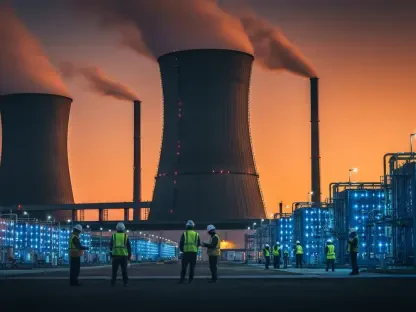The photocatalysis industry is navigating a transformative phase, accentuated by advancements in defect engineering for materials like carbon nitride (CN). This metal-free semiconductor shows promising capability to efficiently degrade pollutants while simultaneously producing clean fuel. The sector plays a pivotal role across various applications, including food processing, biotechnology, and renewable energy production. Historically, the industry has relied heavily on metal-based photocatalysts such as oxides and sulfides, which unfortunately can evolve into environmentally harmful residues.
Overview of the Photocatalysis Industry
Photocatalysis is a rapidly growing field driven by stringent environmental regulations and the global demand for sustainable energy solutions. Stakeholders across multiple segments, including chemical manufacturing and energy production, are intensely vested in technological innovations. Leading companies and research institutions are focused on advancing the capabilities of photoreactive materials, with a spotlight on sustainable solutions. Current regulatory frameworks worldwide increasingly support reductions in carbon emissions through low-impact technologies like photocatalysis.
Trends and Market Dynamics in Photocatalysis
Emerging Trends in Photocatalysis
The industry is witnessing a shift toward greener technologies, with a broad array of emerging trends setting new precedents. Innovations in material structures like defect-engineered CN have piqued interest due to their higher efficiency and environmentally friendly nature. Consumer demand for clean technologies, increased government regulations, and incentives for adopting renewable solutions are significant drivers propelling growth in this sector. Opportunities abound for the commercialization of technologies that ensure environmental compliance and cost-effectiveness.
Market Data and Projections
Market data reveal a positive trajectory, with growth rates projected to increase significantly in the coming years. Performance indicators suggest expanding applications of photocatalysis in diverse areas, from pollution control to energy harvesting. Forecasts lean toward sustained growth, bolstered by the rapid pace of technological innovations and increasing ecological awareness among both consumers and businesses.
Challenges in the Photocatalysis Sector
Despite its potential, the industry grapples with various obstacles. Technological challenges include optimizing photocatalysts for enhanced performance under ambient conditions while maintaining economic feasibility. Market-driven challenges involve scaling up production processes without increasing costs or environmental impact. Potential solutions lie in more advanced engineering techniques, policy support to incentivize R&D investment, and international collaborations to pool knowledge and resources.
Regulatory Environment for Photocatalysis
The regulatory landscape is a critical factor shaping the industry’s path. Compliance with international standards ensures that innovations meet safety and efficacy requirements. Regulations encourage the development of eco-friendly technologies, with changes aimed at reducing barriers for next-gen solutions like defect-engineered CN. The focus on compliance and security measures underpins practices across the sector, ensuring sustainable growth and consumer trust.
Future Outlook and Innovations in Photocatalysis
The future of photocatalysis lies in persistent innovation and adaptation to market needs. Emerging technologies like the defect-engineering of CN could disrupt traditional market dynamics by offering dual-function materials capable of both pollutant degradation and clean energy production. Anticipated advancements are expected to align with global economic conditions favoring sustainable development, further spurred by evolving consumer preferences toward eco-friendly products.
Conclusion and Recommendations
While reviewing the current progress, it became clear that defect-engineered CN is making significant strides in the photocatalysis industry, marking a shift toward sustainable and effective solutions. The industry’s promising outlook hinges on continued advancements in defect engineering and other innovative pathways. It should consider forming strategic partnerships to enhance research capabilities and accelerate the commercialization of promising technologies. Expansion into emergent markets, coupled with an emphasis on sustainability, could facilitate growth and help address global environmental challenges effectively.









